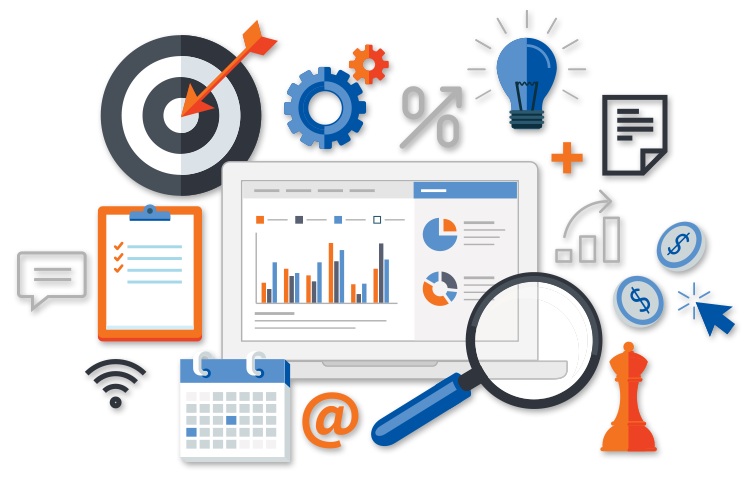Transform Information into Techniques with Cutting-Edge Analytics
Transform Information into Techniques with Cutting-Edge Analytics
Blog Article
Increase Efficiency and Productivity With Data Analytics
In today's data-driven landscape, services are significantly acknowledging the critical function of data analytics in boosting functional effectiveness and earnings. By methodically assessing information, companies can reveal vital understandings that inform calculated choices, streamline procedures, and tailor customer experiences.
Comprehending Data Analytics
In today's data-driven landscape, recognizing information analytics is vital for companies intending to improve operational efficiency and drive profitability. Data analytics entails the systematic computational analysis of information collections to uncover patterns, connections, and understandings that educate decision-making. By utilizing numerous strategies, such as analytical evaluation, maker discovering, and predictive modeling, organizations can change raw information right into actionable intelligence.
The process normally begins with information collection, where pertinent information is gathered from numerous sources, consisting of transactional data sources, consumer interactions, and market patterns. This information is after that cleansed and organized to guarantee accuracy and consistency. When the data is prepared, logical tools and software program are utilized to explore and imagine the details, allowing stakeholders to recognize fads and anomalies.
Inevitably, recognizing data analytics equips organizations to make informed choices based upon empirical proof as opposed to instinct. It promotes targeted approaches that can enhance source allowance, enhance client fulfillment, and improve overall efficiency. As organizations significantly identify the value of data-driven understandings, a strong understanding of data analytics becomes a vital competency for leaders and groups alike, positioning them for continual success in a competitive environment.

Key Advantages for Organizations
Companies that utilize data analytics can unlock a wide variety of advantages that considerably improve their operations and profitability. Among the primary advantages is boosted decision-making. Data analytics gives actionable understandings originated from real-time data, permitting organizations to make enlightened selections that straighten with market needs and customer preferences.

In addition, data analytics promotes improved consumer experiences. By understanding customer behaviors and choices, companies can customize their offerings, causing boosted fulfillment and commitment. This customized method frequently causes higher conversion rates and repeat business.
Additionally, information analytics makes it possible for companies to recognize arising possibilities and patterns. By staying ahead of the contour, organizations can take advantage of brand-new markets and technologies prior to their rivals.
Executing Data-Driven Techniques
Successful application of data-driven strategies calls for a thorough understanding of both readily available data and organizational objectives resources. Organizations should initially define their objectives plainly, making certain alignment in between information initiatives and critical goals. This clearness enables groups to focus on relevant metrics and insights that drive decision-making.
Following, companies should analyze their existing data framework. This involves assessing information high quality, availability, and integration capabilities. High-grade information is crucial for precise analysis, as bad data can result in misdirected strategies and lost resources. Organizations needs to develop processes for information collection, cleaning, and administration to preserve information integrity.
Additionally, promoting a data-driven society is important. Staff members in all levels must be urged to leverage information in their everyday procedures. Training programs and workshops can improve information proficiency, equipping team to make informed decisions based on analytical understandings.
Devices and Technologies Summary
A durable collection of devices and modern technologies is vital for organizations intending to harness the complete possibility of information analytics. These tools assist in the collection, handling, and visualization of data, allowing services to acquire actionable understandings.
At the fundamental degree, information monitoring systems such as SQL databases and NoSQL systems provide efficient data storage and retrieval capabilities. For data processing and evaluation, programs languages like Python and R, together with frameworks such as Apache Spark, enable complex estimations and artificial intelligence applications.
Visualization tools, including Tableau and Power BI, change raw data into intuitive visual styles, making insights obtainable to stakeholders in all levels. Furthermore, cloud-based platforms like Google Cloud and AWS offer scalable storage and handling remedies, accommodating the growing volumes of data organizations experience.
For sophisticated analytics, anticipating modeling and AI-driven services are progressively adopted, permitting firms to forecast trends and enhance decision-making processes. Incorporating these tools into existing operations is extremely important; companies that successfully leverage this innovation can dramatically improve operational effectiveness have a peek at this site and drive productivity. Therefore, purchasing the right devices and technologies is a strategic vital for any type of data-driven organization.
Case Research Studies of Success
Leveraging data analytics has led various organizations to achieve amazing improvements in effectiveness and success. One remarkable case is a big retail chain that carried out predictive analytics to enhance inventory administration. By evaluating historic sales information and consumer fads, the firm decreased excess stock by 30%, causing substantial cost savings and improved cash flow.
One more example can be located in the manufacturing industry, where a leading vehicle supplier utilized information analytics to improve its manufacturing processes. By checking equipment efficiency in real-time, the company recognized ineffectiveness and traffic jams, resulting in a 20% boost in overall equipment efficiency (OEE) This not only increased manufacturing rates but also lessened downtime and upkeep prices.

These instance studies highlight how information analytics can drive critical decision-making, optimize processes, and eventually improve both performance and earnings throughout numerous sectors.
Verdict
In verdict, the integration of data analytics into organization procedures offers substantial chances for enhancing effectiveness and earnings. By methodically assessing information, companies can identify inefficiencies, optimize consumer experiences, and make educated choices.
In today's data-driven landscape, recognizing information analytics is necessary for companies intending to improve operational performance and drive productivity. Information analytics entails the methodical computational analysis of data collections to reveal patterns, connections, and insights that notify decision-making. Data analytics gives workable understandings obtained from real-time information, enabling businesses to make informed check here selections that straighten with market demands and customer preferences.
Premium data is vital for accurate evaluation, as inadequate data can lead to misguided approaches and thrown away resources. Organizations must develop processes for next page data collection, cleansing, and administration to preserve data integrity.
Report this page